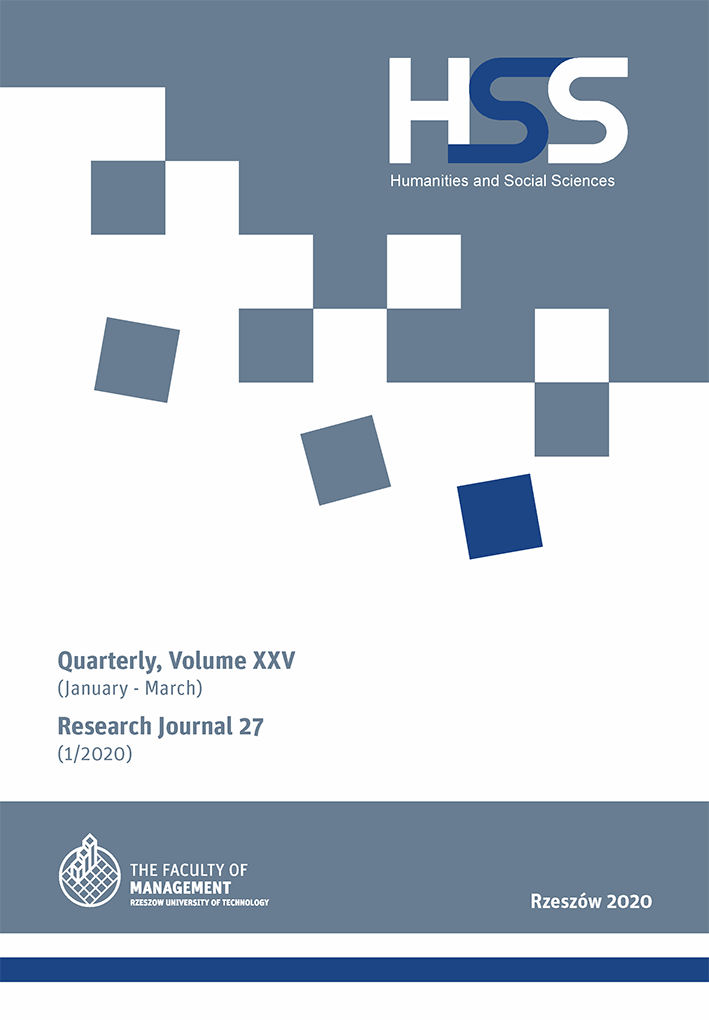Abstract
The present article explores the possibility of increasing the competitiveness of regions by creating interesting tourist products that are based on local resources. An example of such a regional tourist product is the thematic (or ‘nature’) trail. The issue of trail management is also discussed using an example of a cultural trail. This review article used verified data from publicly available existing sources, including specialist literature and the internet. In addition to publicly available data, we used a case study approach using examples of the Culinary Trail “Podkarpackie Flavours” and the “Wooden Architecture Trail” of the Małopolska Voivodship. We analyzed the case study to answer the following question: “Can a tourist product of a region used in a network structure (such as a thematic trail) affect the region's competitiveness?”
References
Abbas, A.J. (2000). Rethinking competitiveness, „Advances in Competitiveness Research” No. 8.
Bogacz-Wojtanowska, E., Gaweł, Ł., Góral, A. (2016). Szlaki kulturowe jako medium zmian w kulturze. Kraków: Stowarzyszenie Gmin i Powiatów Małopolski.
Gaweł, Ł. (2011). Zarządzanie Szlakiem Architektury Drewnianej w kontekście procesu profesjonalizacji szlaków kulturowych. „Turystyka Kulturowa”, www.turystykakulturowa.org, No. 1.
Hallin, C.A., Marnburg, E. (2008). Knowledge management in the hospitality industry: A review of empirical research. „Tourism Management” Vol. 29, No. 2.
https://nawsinajlepiej.polska.travel/2018.html
https://nowiny24.pl/szlak-kulinarny-podkarpackie-smaki-na-liscie-7-nowych-cudow-polski/ar/12459360
https://pl.wikipedia.org/wiki/Szlak_Architektury_Drewnianej
Kachniewska, M. (2015). Model tworzenia sieciowego produktu turystycznego. Warszawa: MROT.
Kaczmarek, J., Stasiak, A., Włodarczyk, B. (2010). Produkt turystyczny. Pomysł, organizacja, zarządzanie. Warszawa: PWE.
Kraszewska, M., Pujer, K. (2017). Konkurencyjność przedsiębiorstw. Sposoby budowania przewagi konkurencyjnej. Wrocław: Exante.
Kruczek, Z., Walas, B. (2009). Nowoczesne postrzeganie promocji kulturowych produktów turystycznych [w:] Stasiak, A., red., Kultura i turystyka – wspólnie zyskać. Łódź: Wydawnictwo WSTiH.
Meyer, B. (2010), Nowe trendy w kształtowaniu produktów turystycznych. „Acta Oeconomica” 9(4).
Nawrot, Ł., Zmyślony, P. (2009). Międzynarodowa konkurencyjność regionu turystycznego. Kraków: Proksenia.
Noga, A. (1993), Dominacja a efektywna konkurencja, Warszawa: SGH.
Panasiuk, A. (2008). Gospodarka turystyczna. Warszawa: Wydawnictwo Naukowe PWN.
——, red. (2013). Marketing w turystyce i rekreacji. Warszawa: Wydawnictwo Naukowe PWN.
Research on the tourist potential of the region and preferences of the target group for the purposes of creating new cross-border products in the Podkarpackie Voivodship, Summary of the Quantitative Research Report developed as part of microproject No. INT /EK/PO/1/II/B/0157 entitled: “Carpathian Adventure – new cross-border travel products”, Rzeszów 2018. Access on the internet: https://podkarpackie.travel/assets/media/prot-streszczenie-pl.pdf
Szewczuk, A., Kogut-Jaworska, M., Zioło, M. (2011). Rozwój lokalny i regionalny. Teoria i praktyka. Warszawa: C.H. Beck.
Zieja, T. (1999). Szlakiem architektury drewnianej. „Przekrój” No. 18/2810.


